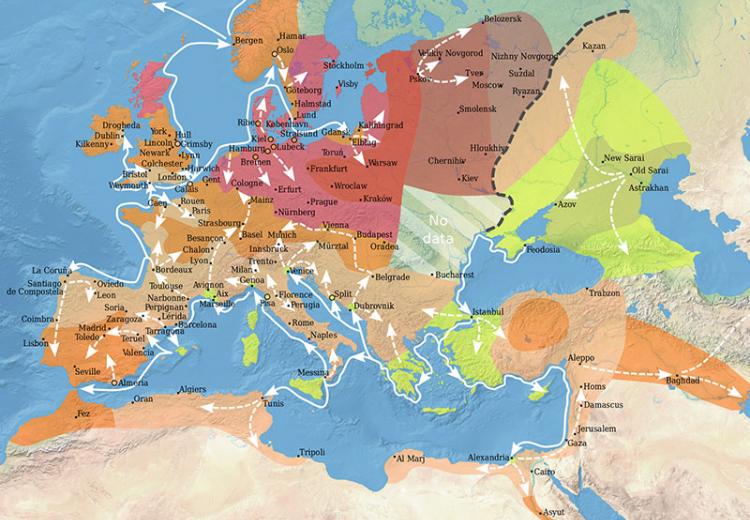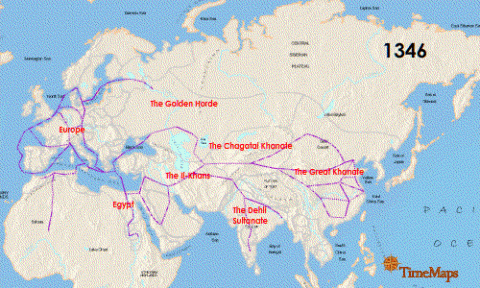The Path of the Black Death

Map showing the spread of the Black Death in Europe between 1346 and 1353.
In the first half of the 14th century, Europe was undergoing significant changes. Cities grew in importance, though most of the population was still rural. Population increases had led to overuse of the available land. Poor harvests—also due to cooler, wetter weather—led to famines. The serf system was being undermined. Centralized political authority was becoming more powerful. Then the Black Death cut a path—both literal and figurative—through the middle of the 14th century. The disease was caused by the bubonic plague, which was spread by rats, whose fleas carried the plague bacilli from the East along trade routes until it penetrated almost all of Europe, killing at least one out of every three people.
Such a radical alteration in population in any place, at any time, would likely set off dramatic changes in society. What happened in a Europe already beginning to transform? In this lesson, students analyze maps, firsthand accounts, and archival documents to trace the path and aftermath of the Black Death.
Guiding Questions
How did the Black Death change the political, economic, and social institutions of Europe?
What medical and other technological developments came as a result of the Black Death?
How did the Black Death effect the ecology and environment of Europe?
To what extent did the Black Death mark the beginning of a new era for Europeans?
Learning Objectives
Analyze the movement and impact of the Black Death using visuals, including maps, charts, and graphs.
Evaluate the short and long-term effects of the Black Death in Europe and elsewhere.
Analyze the environmental, ecological, and labor related changes that occurred in Europe during and as a result of the Black Death.
Assess how the onset of the Black Death resulted in changes within political, economic, and social institutions.

